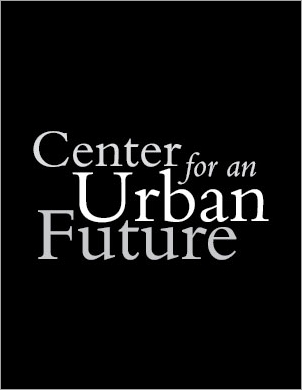
Testimony - April 2001
Long Island City Rezoning
Testimony of Jonathan Bowles, Research Director, Center for an Urban Future, Before City Planning Commission: Long Island City Rezoning
by Jonathan Bowles
Tags: economic growth boroughs queens
Good morning. My name is Jonathan Bowles and I am the research director of the Center for an Urban Future, a non-profit policy institute that has issued a number of studies on economic development and job creation strategies in New York City.
I am here to testify in support of the Long Island City rezoning plan, but also to urge the City Planning Commission to immediately come up with a series of mitigation measures to ensure that the hundreds of manufacturers and warehousing companies now doing business in the industrial districts just outside of the area being rezoned are not ultimately displaced as a result of this initiative.
To begin with, the city's decision to rezone a relatively modest, 37-block portion of Long Island City seems to be a good idea. Developing an attractive business district outside of Manhattan should help the city compete with Jersey City for new media companies, biotech firms and other service-related businesses that want to remain on this side of the Hudson but cannot afford to pay the going real estate prices in Manhattan. Having a more affordable business district could also enable the city to retain businesses without having to offer exorbitant tax incentives.
But while this rezoning initiative has the potential to help attract Manhattan-based businesses to Long Island City, I have grave concerns that it will also eventually lead to the displacement of job-intensive industrial businesses that are already there. In fact, there is a great chance that this rezoning plan will prompt building owners on the periphery of the rezoned area to hike up real estate prices, evict manufactures and convert industrial buildings into more profitable office spaces. This kind of displacement may not happen right away, but as the rezoned area of Long Island City is developed over the next several years, there will be an enormous amount of pressure on local property owners to increase rents and bring in higher paying tenants.
Long Island City has always been one of the city’s most desirable and convenient industrial centers. In fact, virtually no other industrial area in the city today provides such a convenient location: It is close to Manhattan, which allows manufacturers to have easy access to their clients in Manhattan; it is located on several subway lines, which helps these job intensive businesses attract employees from all over the city; and its easily accessible from major highways, enabling trucks to freely come and go.
Yet, in recent years, Long Island City has also become one of the only remaining desirable industrial areas left in New York City. In fact, scores of printers, bakers, woodworkers, garment makers and other manufacturers have been squeezed out of industrial enclaves of Manhattan and North Brooklyn as a result of the same real estate pressures that could soon take place in Long Island City. Many people mistakenly believe that industrial businesses that can no longer afford rents in Manhattan will simply move to the other boroughs. However, there has been a sharp decline in amount of available buildings in traditional manufacturing neighborhoods of Queens, Brooklyn, the Bronx and Staten Island. Vacancy rates in the boroughs outside of Manhattan are at or near record lows. In fact, according to Greiner Maltz, a Queens-based real estate company, the overall vacancy rate for industrial facilities in Queens was 6.93 percent last summer, down from 13.47 percent in 1995. The overall vacancy rate for industrial buildings in Brooklyn was 8.26 percent last summer, down from 15 percent in 1996.
The City Planning Commission must not continue to ignore these very real problems. It must take decisive action, or at least start the ball rolling for some long-term mechanisms to protect the city’s existing industrial base.
My recommendations are in line with those being suggested by the New York Industrial Retention Network. Specifically, I urge the city to take the following steps:
Through zoning, enact a manufacturing preservation zone in areas of Long Island City where there is a strong concentration of manufacturing firms and other job-intensive industrial businesses. The conversion of manufacturing space to office use or large-scale retail should be prohibited in this zone. Such zoning would send a clear signal that the peripheral areas of Long Island City are intended for manufacturing and would remove incentives that encourage real estate speculation. It would also preserve the cluster or network of manufacturers that exists in the Long Island City today.
Commit to develop this new zoning in collaboration with a task force that would be set up with representatives from the local community boards, labor, manufacturers and trade associations. The City should also commit to provide funding for City Planning to undertake the zoning initiative.
Impose a Special Assessment on the area being rezoned to remediate the harm that is caused by the rezoning and to fund manufacturing retention programs such as: Working with displaced companies to find space and plan relocation; Reimbursing companies for moving costs; and Lowering costs of developing and acquiring replacement space.
This doesn't have to be a zero sum game. With the right planning, the city should be able to accommodate the needs of both new and old economy businesses. Both are crucial to the city's economy.